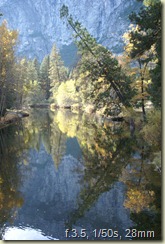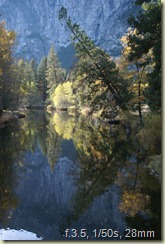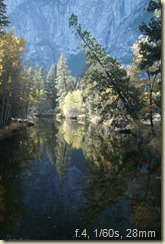Using a meter
This project is about using the light meter to get a proper balance of light across the entire photograph.
My camera has a built in light meter, but like most modern digital cameras, the camera measures the light through the viewfinder, and then sets the exposure to give the best lighting balance. The resultant photo is therefore exposed the way the camera manufacturer thinks it should be. As a result, it would differ from camera to camera.
Now, down to my camera. It has three metering modes.
Multi-segment, which divides the entire sensor into 40 segments, and takes the average reading.
Centre weighted, which measures the average brightness, but emphasizes the central part of the sensor.
Spot, which concentrates only on the very centre of the sensor.
My camera also has another element that affects the exposure, called Dynamic range optimisation, which only operates when using multi segment metering, and gives yet another thing to adjust the exposure.
Most scenes are a mixture of light and dark, however, automatic cameras tend to generalize, but most photographic situations are anything but general.
To demonstrate, compare the following two photos.
They are both taken at ISO 100, and a focal length of 120mm, and both taken using multi-segment metering (and DRO on).
The first is how the camera interpreted the lighting, and adjusted the exposure accordingly. It decided on 1/400 sec at f.8. In my opinion, this photograph is over exposed. The camera has taken the overall scene, but there are parts of the scene that are much lighter, such as the building and parts of the rock. As a result, the building is over exposed, and the background mountains are much too light, and look misty. There is also a cloud over the top of the building that is hardly visible.
I took the same shot using exposure compensation of –1, and the exposure changed to 1/640 at f.9. The result is that the building is much better defined against the rock, the mountains in the rear are much clearer, as is the cloud above the building.
Three more photos below demonstrate changing exposures away from the camera setting, and also, the effect of changing the metering mode.
The first uses the camera settings, with metering set to multi segment. The picture is generally dark, but the tree in the centre is quite bright with sunlight on it. The camera has adjusted the overall scene to compensate for the darkness, however this has resulted in the centre tree being over exposed. Incidentally, the camera chose ISO 160 for this shot.
By using an exposure compensation of –7, there is much more definition of the surrounding area, and the tree is now exposed better. The camera chose ISO 100 here, so rather than changing the exposure, it changed the speed of the film.
To experiment, I left the exposure at –7, but changed the metering mode to centre weighted. this time, the camera has given more emphasis to the central portion of the photo, and has lost a lot of the definition, and has slightly over exposed the central tree again. The ISO remained at 100.
One thing to bear in mind here is that changing from multi to centre weighted, the Dynamic Range Optimiser on my camera did not operate, giving yet another element to consider.
The result is that when I look at a shot, if there is not a consistency of light over the whole picture, I prefer to set the exposure compensation to 1 stop down in order to obtain a better effect. Of course, not all circumstance are the same, but suffice to say that although my camera gets good results from pointing and clicking on auto, the vagaries of differing light means that I can get much better results by interpreting the light meter results and compensating where I think the shot needs it.
I have noticed that my camera seems to change the exposure settings when compensating in a light scene, but changes the speed of film, when compensating in a dark scene. I have seen this with a number of experiments so it’s worth remembering!





No comments:
Post a Comment